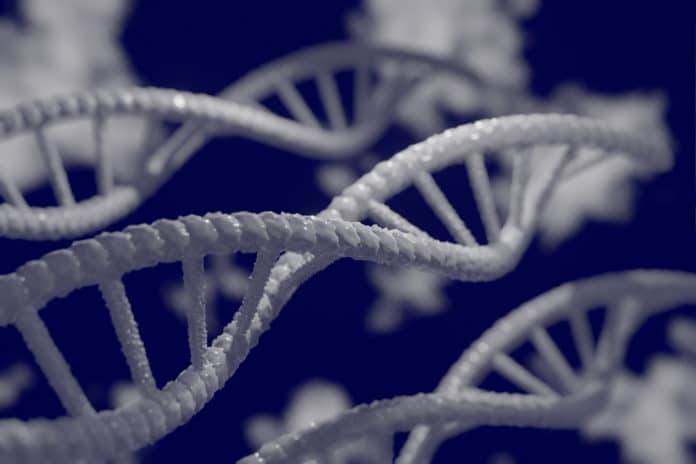Each human cell contains approximately 2 meters of DNA if stretched end-to-end. This DNA is twisted around proteins called histones so it can fit inside the nucleus.
The whole complex of DNA and histone proteins is called chromatin, and the physical structure and dynamics of chromatin heavily influence which genes are expressed.
The higher-order structural organization and dynamics of the chromosomes play a central role in gene regulation. To explore this structure-function relationship, it is necessary to visualize genomic elements in living cells directly.
Using CRISPR/Cas9 Gene Editing, scientists from UNIST have developed a way to label specific points in DNA inside living cells with fluorescent probes. This new labeling system enables real-time tracking of how DNA is packaged inside the cell nucleus.
Also, it could help identify how changes in chromatin structure affect gene expression, aging, and cancer.
Scientists used CRISPR/Cas9 gene-editing technology to attach fluorescent probes to precise segments of DNA, called loci, inside living cells.
Doing so reduced background noise from probes. The probe light up more than the targeted area to improve their ability to observe small sections of chromatin. A particular type of probe was used in combination to perform this task. This design amplifies the target signal and allows specific components to be refreshed, extending the labeled loci glow.
Narendra Chaudhary, Ph.D. candidate and first author of the study, said, “Using the system, the researchers were able to see the location and motion of the target chromatin segment by looking through a fluorescence microscope. The team observed that DNA strands not only move passively inside the nucleus, as the ink spreads in water but also act in certain time scales, confirming an earlier prediction.”
Scientists are hoping to use the system to target a broader range of loci throughout the genome and observe their movement inside the nucleus. It can be used to study genetic processes inside living cell nuclei, such as DNA replication, repair, recombination, and transcription, through direct imaging.
Journal Reference:
- Narendra Chaudhary et al. Background-suppressed live visualization of genomic loci with an improved CRISPR system based on a split fluorophore. DOI: 10.1101/gr.260018.119
